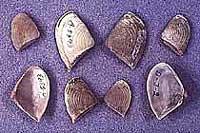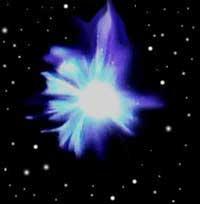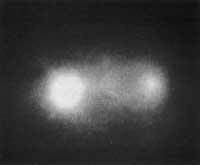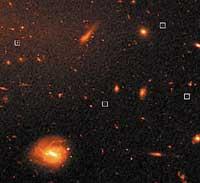Did the ancestors of mussels die a supernova?
2002/02/12 Carton Virto, Eider - Elhuyar Zientzia

Supernovae occur when very large stars run out of fuel, collapse and explode. Then they throw large amounts of matter and energy into space. Five supernodes occur in relatively young star groups and, in fact, there are three such zones in the Scorpius-Centaurus association of our galaxy. Researchers at John Hopkins University have calculated that each of them could produce a supernova now 10, 7 and 2 million years, the last to 130 light years on Earth. At that distance, without causing enough damage to destroy the Earth, it would have left signs on Earth.
Three years ago, German researchers found large concentrations of 60 iron elements in ocean rocks. Iron 60 appeared in two layers, one from 0-3 million years ago and another from 4-6 million years ago. According to researchers at John Hopkins University, the iron remains of the younger layer are yielded by this possible supernovel. It is believed that the Earth suffered a bombardment of cosmic rays as a result of the explosion and is the product of nuclear reactions caused by 60 cosmic iron rays.
Sequence of events
2 million years ago a supernova occurred in the Scorpius-Centaurus association of the Milky Way. The earth was bombarded by cosmic rays and chemical reactions occurred in the atmosphere. On the one hand, iron 60 was formed that accumulated in ocean rocks and, on the other, nitrogen monoxide was formed that destroyed atmospheric ozone.

Nitrogen monoxide has the ability to destroy ozone and is believed to be due to large amounts of cosmic rays. Astronomers have calculated that a supernova at 130 light years would reduce the ozone layer by 60%. Due to the weakness of the ozone layer, marine beings were exposed to the ultraviolet rays of the sun, plankton died and subsequently fed plankton.
Missing piece
But even though researchers at John Hopkins University have presented a circular and interesting hypothesis, they lack a piece to complete the puzzle, that is, find some trace of this destructive supernova in one of the stellar ensembles of the area.

Gai honi buruzko eduki gehiago
Elhuyarrek garatutako teknologia






